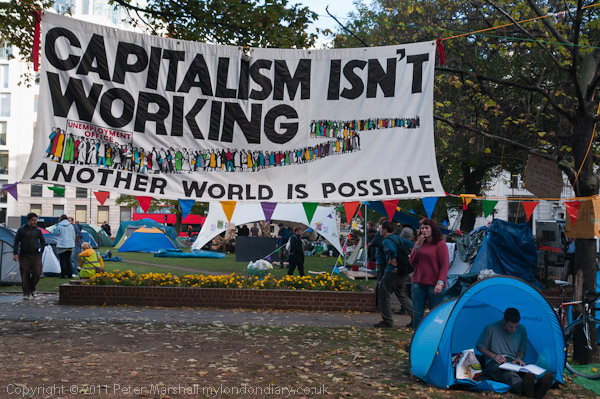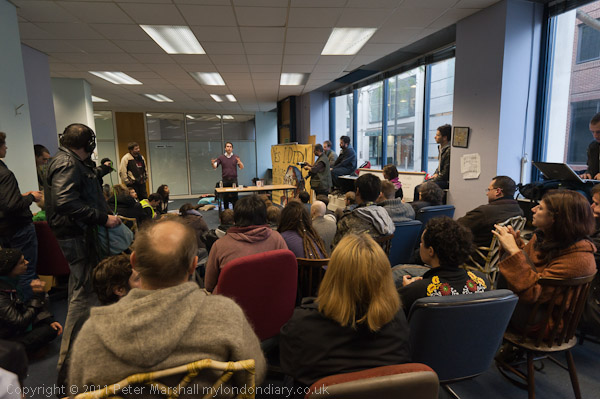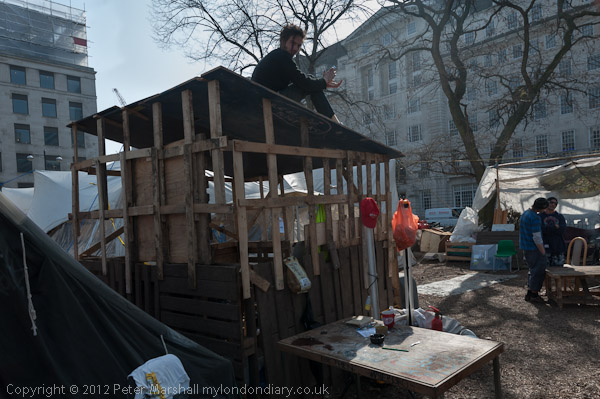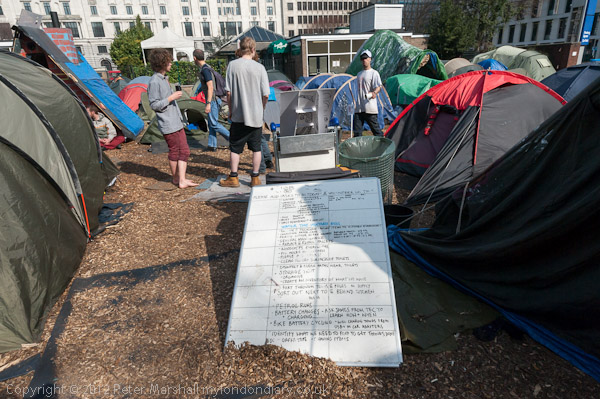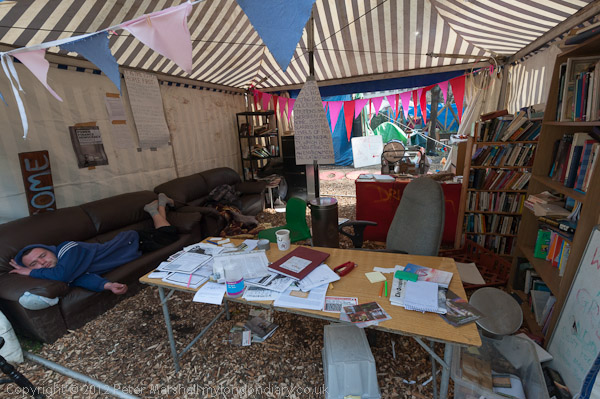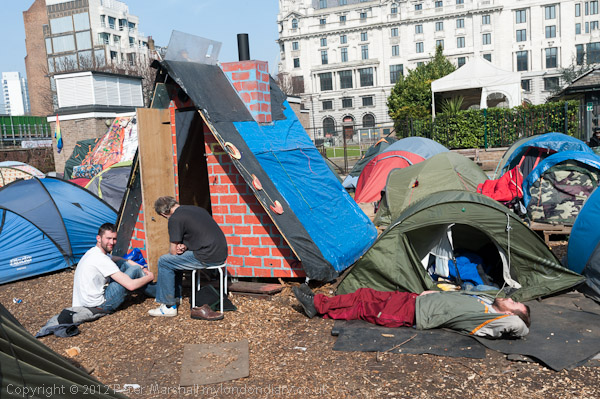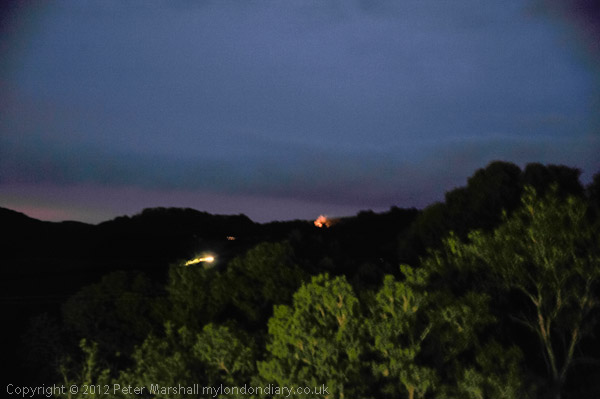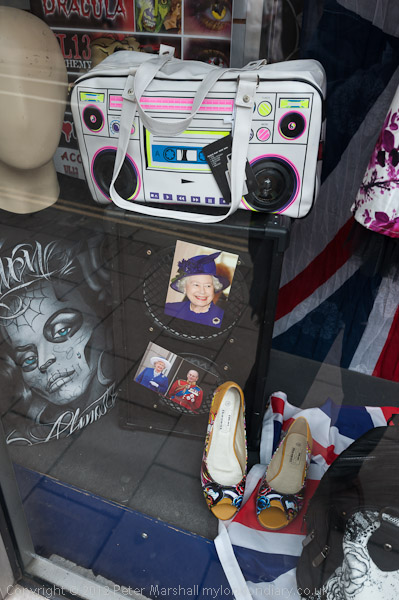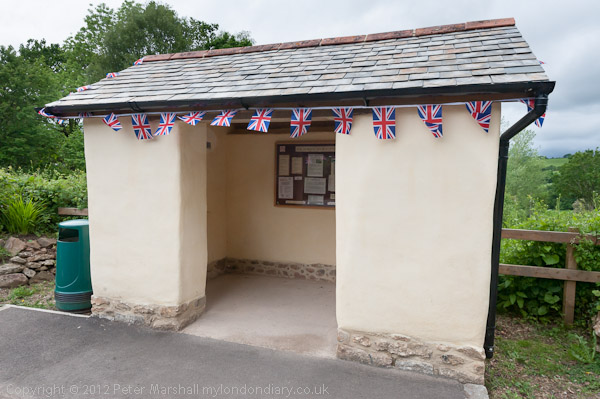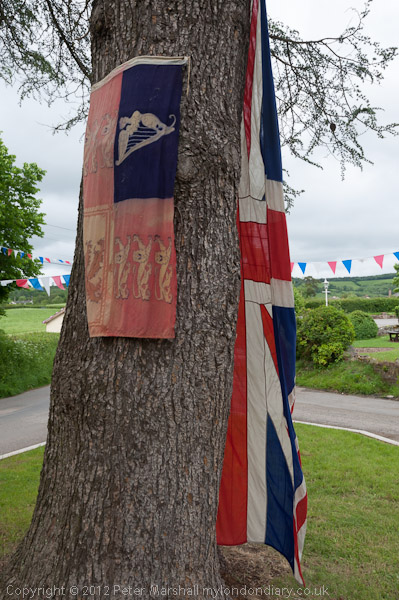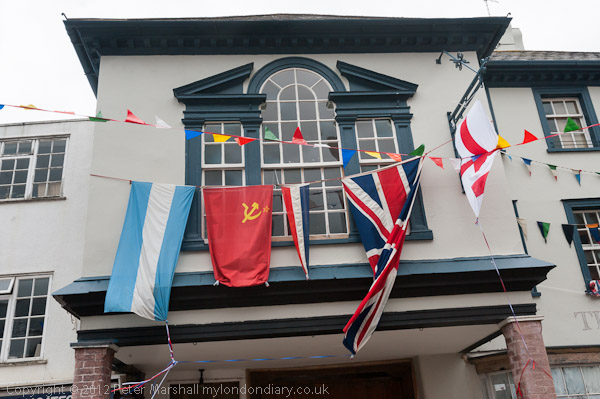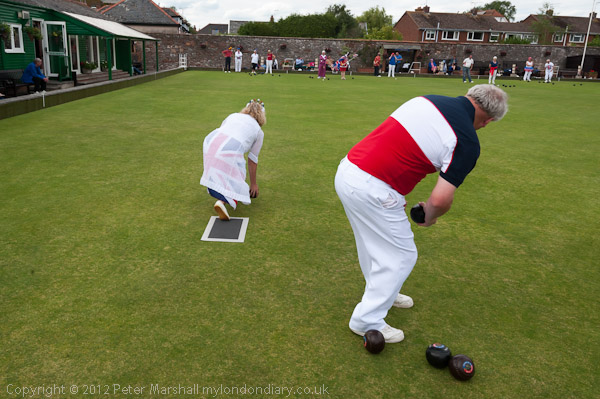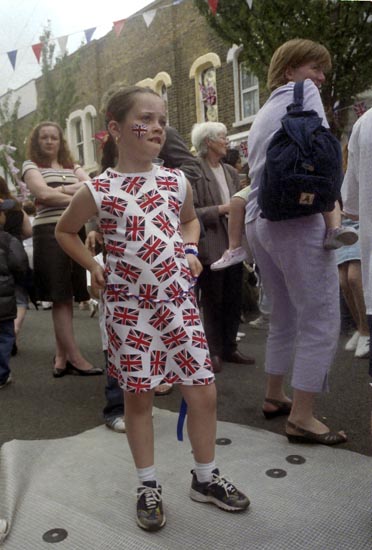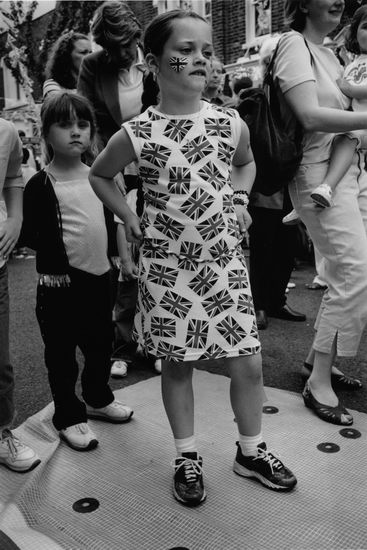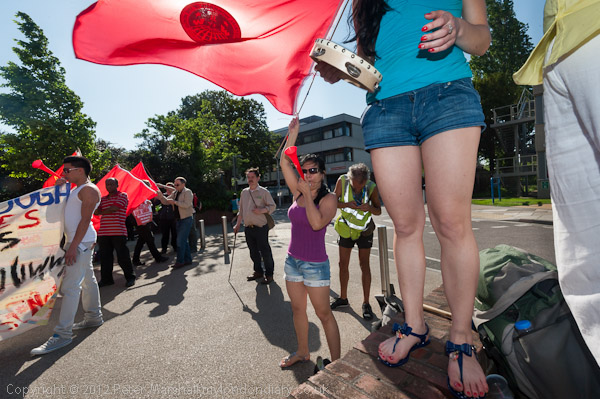
Sometimes there are pictures which appeal to me but which are unlikely to be used and I think the above image is one of them. Although I like it as an image, I think it doesn’t really tell the story. Looking at it there are clues about the event, but nothing that makes it clear.
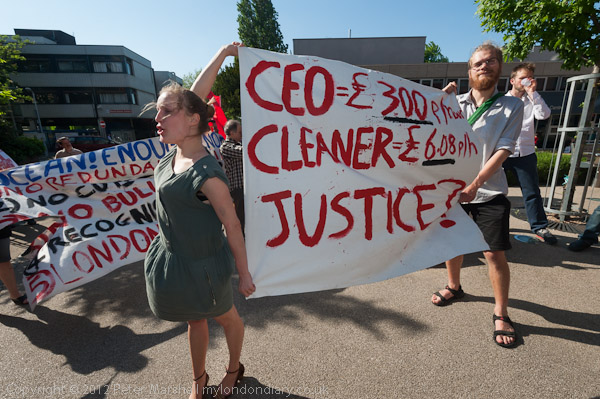
I think this is probably the one I chose as the lead image for the story, because the text on the banner makes it clear what the protest – by cleaners at one of London’s leading hospitals – was about. Or perhaps I might have chosen something like this one:
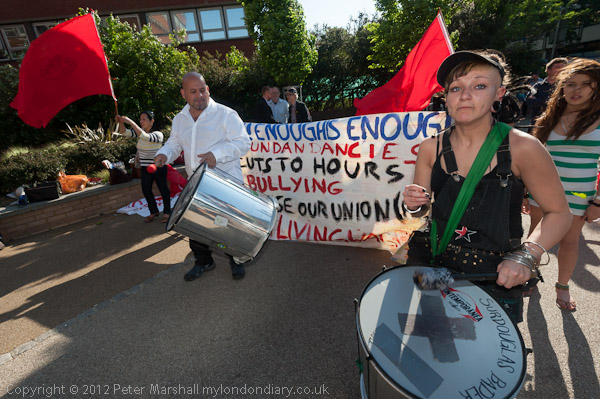
It felt strange to be back at St George’s Hospital, where nine years ago I spent some time in a bed waiting for an operation which finally put me back on my feet again, although the actual building I was in – typically Victorian with the kind of long wards where Florence Nightingale would not have looked out of place – was due for demolition a few weeks after I left, and not before time.
One thing that impressed me in 2003 about St George’s was the quality of the cleaning. It was the third hospital I’d been in; the first with cleaning out to a contract was largely filthy, and in one of the wards I found discarded needles and dressings under my bed, though the intensive care ward I’d gone in to on entry was well looked after. But basically whenever the nursing staff wanted the place cleaning there were no cleaners to be found. The second hospital was so crowded with beds I don’t think you could see under them.
At St George’s the ward staff made sure the cleaners did a good job, and although the plumbing was falling to bits and parts of the walls were crumbling the floor shone. I don’t know how well the place is cleaned under Ocean who now employ the cleaners, but if as they are trying to they manage to cut the hours the cleaners are given, standards will suffer, both because the staff have less time to clean, but also because of the loss of morale that a cut in their overall pay will undoubtedly bring.
The dispute at St George’s is also about union recognition. The cleaners – all except one – belong to the IWW which now has many of London’s cleaners in its branch here. They have lost faith in unions such as Unite who they feel have failed to press their demands with management, neglecting them in order to get a better deal for more highly paid members. But the management recognise Unite but not the IWW, perhaps because they know they will not be pressed as hard. There were plenty of opportunities to show the IWW was fighting for the cleaners, and those red flags are IWW flags, but in other pictures I tried hard to make their involvement more obvious.
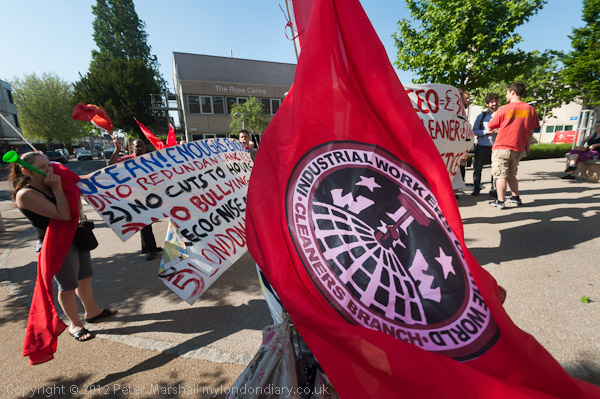
Although I think I did a decent job overall – and you can judge for yourselves at Hospital Cleaners Protest on My London Diary – and certainly the cleaners were pleased with the pictures and article published on Demotix, I wasn’t entirely happy, as there was no single picture in which I really managed to put all the elements together. Some days it’s really difficult to find what you want.
________________________________________________________
My London Diary : Buildings of London : River Lea/Lee Valley : London’s Industrial Heritage
All photographs on this and my other sites, unless otherwise stated are by Peter Marshall and are available for reproduction or can be bought as prints.
To order prints or reproduce images
________________________________________________________
